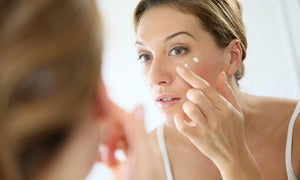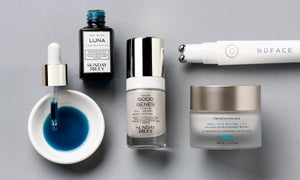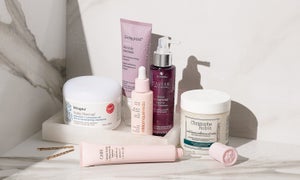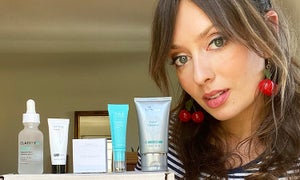
You’ve probably heard of cholesterol, ceramides and essential fatty acids before, whether as part of your diet or your skin care routine. What most people don’t realize is that these three compounds, called lipids, are already present in your skin and actually play a major role in how your skin looks and behaves. But what are they, what do they do and how do they work together to slow down the skin’s aging process?

Lipids in Your Skin
In a nutshell, lipids are skin’s natural fats. They are essential components of skin and play a crucial role in maintaining the strength of the skin’s protective barrier, which holds moisture, protects the skin from damage and keeps dirt and impurities out. They also aid the skin’s natural repair process. While there are many types of lipids, these three are the most prevalent—and important—for the skin.
- Cholesterol: This lipid helps accelerate the skin barrier’s recovery and improve the appearance of skin elasticity. Visible skin aging is often caused by cholesterol deficiency on the skin. It's important to note that cholesterol on your skin is different from the cholesterol found in the blood, and having more of it on your skin won't cause your blood pressure to spike.
- Ceramides: This type of lipid is proven to increase the skin’s hydration and barrier function. Ceramide deficiency is the main cause of dry skin.
- Fatty acids: Abundant in young, healthy skin, fatty acids help maintain the skin’s lipid balance.
Healthy, youthful skin has an abundance of these naturally occurring lipids. As we age, lipid production declines, and this can result in rough surface texture, uncomfortable tightness, dullness and loss of facial fullness. A compromised skin barrier is also more prone to irritation and water loss. This is why it’s important to counter the effects of lipid loss with a topical treatment—but not just any topical treatment.
Studies have shown that the most effective topical products for our skin are the ones with a lipid composition most identical to our skin’s own lipid composition: 1:2:1 ratio of ceramides, cholesterol and fatty acids. With 2% pure ceramides, 4% natural cholesterol and 2% fatty acids, SkinCeuticals Triple Lipid Restore 2:4:2 is formulated with a maximized concentration of lipids in this optimal ratio. In an 8-week study, Triple Lipid Restore 2:4:2 significantly improved the appearance of key visible signs of accelerated aging. And it’s not just for aging skin: This potent treatment also helps reinforce the skin’s barrier both before and after cosmetic treatments, which is essential for optimal healing and results.
Add It to Your RoutineSo how do you incorporate this product in your existing routine? Simple: In the morning, cleanse, tone and apply a topical antioxidant like C E Ferulic as usual and follow with Triple Lipid Restore 2:4:2 to hydrate the skin and counter the effects of lipid loss. Then apply a broad-spectrum, mineral-based sunscreen like Physical Fusion UV Defense SPF 50. In the evening, cleanse, tone and apply a retinol product like Retinol 0.5, and finish with Triple Lipid Restore 2:4:2 to aid the skin’s self-repair overnight.

Related Articles






